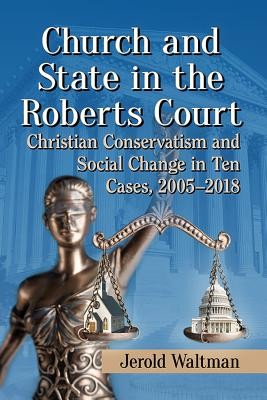
- We will send in 10–14 business days.
- Author: Jerold Waltman
- Publisher: McFarland and Company, Inc.
- Year: 2019
- Pages: 186
- ISBN-10: 1476671478
- ISBN-13: 9781476671475
- Format: 14.7 x 22.1 x 0.5 cm, softcover
- Language: English
- SAVE -10% with code: EXTRA
Reviews
Description
Religious liberty is often called ""the first freedom."" For many years, few decisions made by the Supreme Court have been more significant for ordinary Americans than those concerning issues of church and state. By what criteria do the justices make these holdings? This analysis reaches beyond legal doctrines and focuses on four important aspects of change in the American religious landscape: increasing religious diversity; the rise of secularism; the fast growing political influence of gay and lesbian groups; and the pushback from conservative Christians caused by these trends. The author examines how these changes nation-wide have influenced the Supreme Court under Chief Justice John Roberts in dealing with church-state cases.
EXTRA 10 % discount with code: EXTRA
The promotion ends in 18d.05:28:15
The discount code is valid when purchasing from 10 €. Discounts do not stack.
- Author: Jerold Waltman
- Publisher: McFarland and Company, Inc.
- Year: 2019
- Pages: 186
- ISBN-10: 1476671478
- ISBN-13: 9781476671475
- Format: 14.7 x 22.1 x 0.5 cm, softcover
- Language: English English
Religious liberty is often called ""the first freedom."" For many years, few decisions made by the Supreme Court have been more significant for ordinary Americans than those concerning issues of church and state. By what criteria do the justices make these holdings? This analysis reaches beyond legal doctrines and focuses on four important aspects of change in the American religious landscape: increasing religious diversity; the rise of secularism; the fast growing political influence of gay and lesbian groups; and the pushback from conservative Christians caused by these trends. The author examines how these changes nation-wide have influenced the Supreme Court under Chief Justice John Roberts in dealing with church-state cases.


Reviews